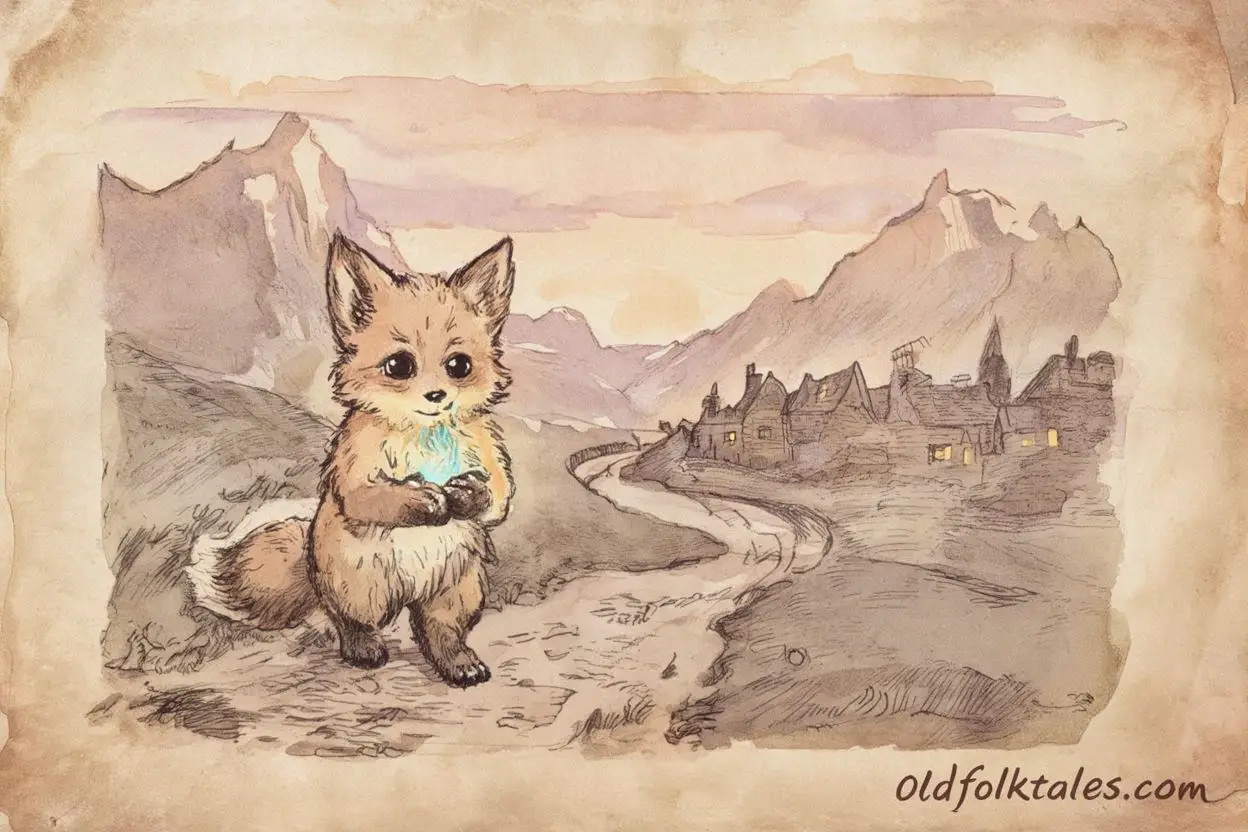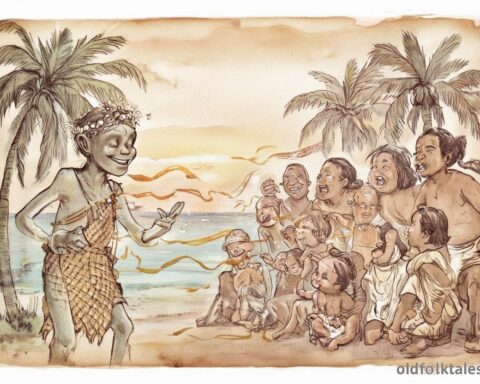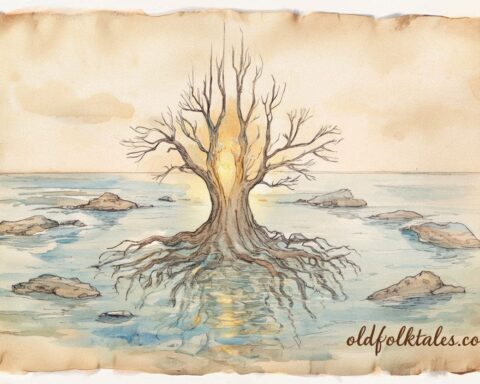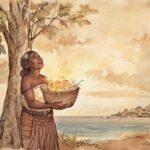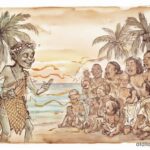In the earliest days of the world, when the earth was still young and the trees whispered the names of the stars, humankind lived without fire. The nights were cold, and the people huddled together beneath animal skins, trembling as the wind swept across the plains. They ate their food raw and shivered through the long dark hours.
Yet far away, on a high mountain surrounded by clouds, a group of powerful spirit beings kept fire for themselves. They guarded it within a great hollow log, feeding it with dry leaves and bark. From that log, smoke curled into the sky, and at night its glow could be seen flickering through the mist.
The people below watched in wonder and despair. They knew that warmth and light existed but could not reach it. The spirits who held the flame refused to share it, saying, “Fire is ours. It belongs to the sky beings. Humans are not wise enough to keep it alive.”
Among the people lived a small water rat who was both clever and brave. He listened to the elders speak of the cold and the endless dark, and his heart ached with pity. One night, he said to himself, “If fire is guarded by the spirits, then I will find a way to bring it down. The people need warmth, and I will not rest until I have found it.”
Sail through the legends of brave navigators, ocean spirits, and island gods
He set off toward the mountain where the spirits lived. The journey was long and dangerous. The rocks were sharp, and the winds fierce, but the little rat climbed on, driven by courage and love for his people. When he reached the top, he hid among the shadows and waited.
At dawn, the spirits emerged from their camp, stretching their long limbs and singing to the morning sky. They danced around the log of fire, proud of their treasure. When they went to fetch more wood, the water rat crept forward. He tore a strip of dry bark and pressed it against the glowing embers. The bark caught the spark and began to smolder. Quickly, he wrapped it in leaves and ran down the mountain, the smoke rising behind him like a trail in the air.
The spirits soon noticed the missing spark. Their cries echoed through the valleys. “Thief! The fire is stolen!” they shouted, racing after the rat. But he was swift and determined. He leapt across streams, darted through reeds, and splashed into the river. The flames hissed, but the rat swam fast, keeping the spark above the water.
When he reached the riverbank where the people waited, he placed the smoking bark upon a bed of dry sticks. He blew softly until the flame rose bright and strong. The people gasped and stepped back in awe. For the first time, warmth touched their faces.
The elders danced and sang in joy. They fed the fire with wood and leaves, and soon it burned high, sending light into the dark. The people cooked food for the first time, feeling strength return to their bodies.
The spirits arrived too late to take back what had been given. Seeing that humankind now had fire, they could not undo the deed. One of them, a wise old being, said, “Let it be so. The fire has chosen its new home. From this day on, humans shall guard it with care and pass its knowledge from one generation to the next.”
The water rat became a hero among the people. But in some places, the story says it was not the rat who stole the flame, but a hawk. The hawk carried the burning stick in its claws, flying over the forest until sparks fell to the ground and set the trees alight. The people gathered the burning branches, learning to make fire for themselves.
Whichever version is told, the lesson remains the same: that courage, cleverness, and compassion can change the fate of the world.
From that day forward, the people kept fire in their camps. They learned to cook, to forge tools, and to stay warm through cold nights. The light of fire became the light of knowledge, a gift that joined earth, sky, and humankind in a single bond of power and gratitude.
Moral Lesson
The story teaches that wisdom and courage bring transformation. True knowledge must be shared, for what is hoarded grows cold, but what is shared gives life.
Knowledge Check
1. Who originally guarded the fire in the story?
The fire was guarded by powerful spirit beings who kept it hidden from humankind.
2. Why did the water rat decide to steal the fire?
He wanted to bring warmth and light to the people who suffered in the cold.
3. How did the water rat carry the fire without letting it go out?
He wrapped a burning spark in dry bark and leaves and ran down the mountain.
4. What happened when the spirits discovered the fire was gone?
They chased the rat but could not catch him before he gave the flame to the people.
5. What did humans learn after receiving the fire?
They learned to cook food, stay warm, and use fire responsibly as a sacred gift.
6. What is the main lesson of the story?
That courage and generosity can bring great change and wisdom to all.
Source
Adapted from “The Discovery of Fire” in Aboriginal Myths: Tales of the Dreamtime by A. W. Reed (1978), Terrey Hills, N.S.W.: Reed.
Cultural Origin
Australian Aboriginal (Dreamtime, pan-tribal versions)
